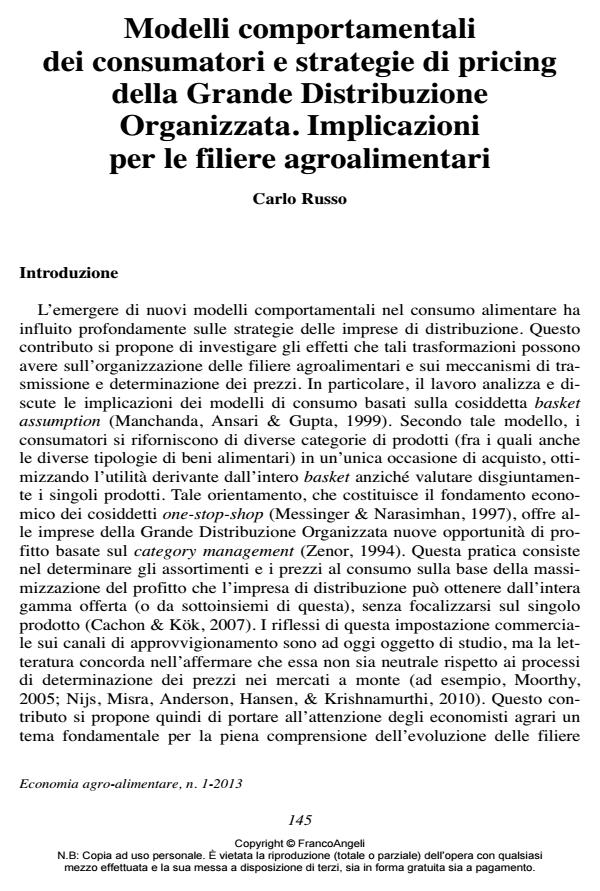Modelli comportamentali dei consumatori e strategie di pricing della Grande Distribuzione Organizzata. Implicazioni per le filiere agroalimentari
Titolo Rivista ECONOMIA AGRO-ALIMENTARE
Autori/Curatori Carlo Russo
Anno di pubblicazione 2013 Fascicolo 2013/1
Lingua Italiano Numero pagine 11 P. 145-155 Dimensione file 112 KB
DOI 10.3280/ECAG2013-001007
Il DOI è il codice a barre della proprietà intellettuale: per saperne di più
clicca qui
Qui sotto puoi vedere in anteprima la prima pagina di questo articolo.
Se questo articolo ti interessa, lo puoi acquistare (e scaricare in formato pdf) seguendo le facili indicazioni per acquistare il download credit. Acquista Download Credits per scaricare questo Articolo in formato PDF

FrancoAngeli è membro della Publishers International Linking Association, Inc (PILA)associazione indipendente e non profit per facilitare (attraverso i servizi tecnologici implementati da CrossRef.org) l’accesso degli studiosi ai contenuti digitali nelle pubblicazioni professionali e scientifiche
The paper discusses the implications of the emerging consumers behavior model for agri-food price distribution. The motivation of the study lies in the increasing relevance of the so-called basket-shoppers, who are consumers willing to buy multiple categories of products (including food) in a single shopping experience. Their purchasing decisions are based on making the maximum use of the whole basket, regardless of the individual products which go into it. This social change has prompted adaptations in the retail industry and the emergence of strategies based on one-stop-shops and category management. Such strategies focus on the joint profit maximization of the contents of the consumer’s entire basket, without considering the margins on individual products. The paper develops a simple theoretical model to describe the implications of such adaptation on agri-food price trends. In particular, the paper shows that if the retail industry consists of firms adopting category management techniques, food prices are less elastic and less correlated to the prices of agricultural products than they would be in the absence of such practices. Also, the model shows that agricultural price volatility increases and the margin on goods with inelastic demand (such as food) increases.
Parole chiave:Basket shoppers, category management, agricultural and food prices
Jel codes:Q11, Q12
Carlo Russo, Modelli comportamentali dei consumatori e strategie di pricing della Grande Distribuzione Organizzata. Implicazioni per le filiere agroalimentari in "ECONOMIA AGRO-ALIMENTARE" 1/2013, pp 145-155, DOI: 10.3280/ECAG2013-001007